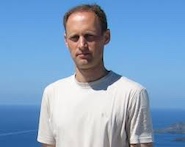Nirenberg Lectures in Geometric Analysis
Bruce Kleiner (Courant Institute, NYU)

Bruce Kleiner will deliver a series of three lectures, one of which is intended for a general mathematical audience.
叠颈辞驳谤补辫丑测:听Professor听Bruce Kleiner is a world-leading expert in geometric analysis. He is professor at New York University鈥檚 Courant Institute of Mathematical Sciences. He received his Ph.D. from the University of California, Berkeley in 1990. Among many important contributions to the field, Professor Kleiner proved, in 1992, the Cartan-Hadamard conjecture in dimension 3 and found, in 2007, a relatively simple proof of Gromov鈥檚 theorem on groups of polynomial growth. In 2013, he received with Professor John Lott the National Academy of Sciences Award for Scientific Reviewing听for their joint detailed exposition of Perelman's celebrated solution of the Poincar茅 Conjecture.听He is a 2014 and 2024 Simons Fellow and a 2006 and 2022 ICM speaker. Recently, in joint work with Richard Bamler, Professor Kleiner proved the Multiplicity One Conjecture for mean curvature flows of surfaces in R^3.
1st and 2nd lectures
Monday October 28, 2024 and Wednesday October 30, 2024 from 3:30 p.m. to 4:30 p.m.听
Room 5340 (CRM).
Title of 1st lectures : Diffeomorphism groups, moduli spaces, and Ricci flow I.
Title of 2nd lectures : Diffeomorphism groups, moduli spaces, and Ricci flow II.
Abstracts of lecture 1 and 2 : The Smale Conjecture (1961) may be stated in any of the following equivalent forms:
-The space of embedded 2-spheres in R^3 is contractible.
-The inclusion of the orthogonal group O(4) into the group of diffeomorphisms of the 3-sphere is a homotopy equivalence.
- The space of all Riemannian metrics on S^3 with constant sectional curvature is contractible.
This fascinating conjecture inspired many subsequent advances in topology and geometry over the ensuing decades, both in the case of 3-manifolds, and in higher dimensions. Recently, Ricci flow was used to settle several long-standing conjectures which had resisted all other approaches. After covering the necessary background, the aim of the first two lectures will be to give an account of these developments for non-experts.
3rd lecture
Friday November 1, 2024 from 3:30 p.m. to 4:30 p.m.听
Room 5340 (CRM).
Title : Recent progress in mean curvature flow.听
Abstracts : An evolving surface in space is a mean curvature flow if its (normal) velocity vector field is given by its mean curvature, at every time. Mean curvature flow is the steepest descent (gradient) flow for the area functional, and the natural analog of the heat equation for an evolving surface. It first appeared in the physics literature in the 1950's in the context of annealing, and it has served as a mathematical model for a variety of physical situations where an interface (or surface) has an energy proportional to area, and inertial effects are negligible. It also has applications in mathematics, engineering and computation. Mean curvature flow has been studied intensely by mathematicians since the late 70s using a wide range of tools from analysis and geometry, with the aim of developing a rigorous mathematical theory incorporating the formation and resolution of singularities. The lecture will discuss the developments over the decades, including recent breakthroughs in the last 5-10 years.
听
